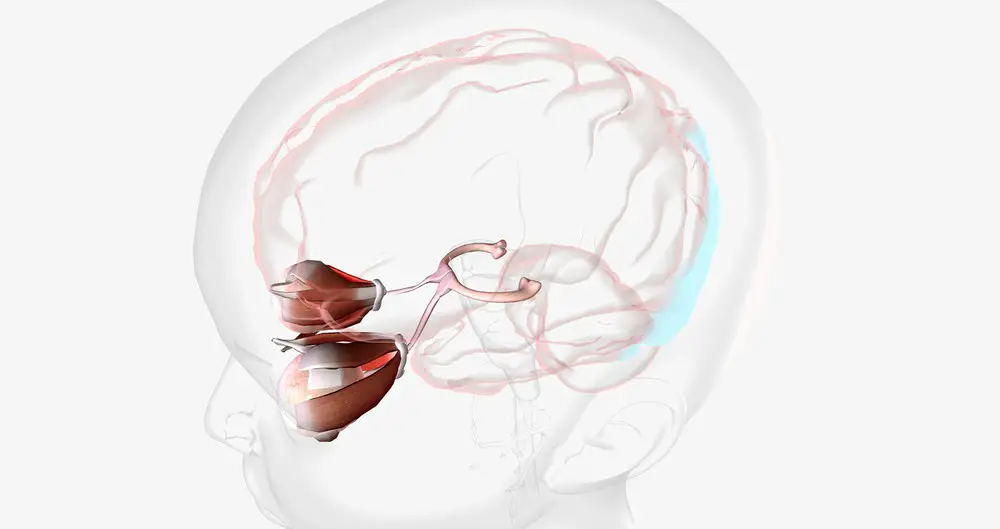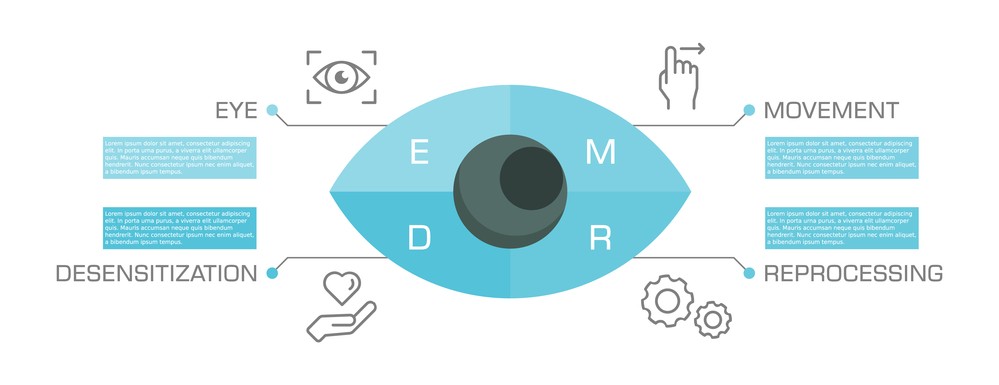As a BetterHelp affiliate, we receive compensation from BetterHelp if you purchase products or services through the links provided
Eye Movement Desensitization and Reprocessing (EMDR) therapy is an integrative psychotherapy approach to treating trauma and post-traumatic stress disorder (PTSD) symptoms. It has gained widespread acceptance due to its effectiveness in reducing the severity of these symptoms and helping patients cope with their experiences. However, like any therapeutic approach, EMDR has some potential drawbacks. Understanding the possible side effects of EMDR therapy is essential for patients and clinicians to make informed decisions about whether this treatment is appropriate for their needs.
One of the main concerns regarding EMDR therapy is the potential for temporary emotional distress. As patients confront, process, and ultimately work to resolve traumatic memories, they may experience heightened emotions during and immediately following sessions. This can include feelings of sadness, anger, or anxiety. Both therapists and patients must be aware of these potential emotional side effects and be prepared to address them as part of the healing process.
In addition to emotional reactions, physical sensations such as dizziness, nausea, and headaches can also occur during or after EMDR treatment. These side effects are typically mild and temporary, but individuals should be prepared to discuss any concerns with their therapist. Open communication can help address any side effects and ensure the therapy session remains a safe and supportive environment for healing and growth.
EMDR Therapy Overview

History and Development
EMDR therapy, or Eye Movement Desensitization and Reprocessing, is a psychotherapy developed by Francine Shapiro in the late 1980s. It aims to help individuals process and heal from traumatic or distressing memories. EMDR is built on the premise of the Adaptive Information Processing model, which suggests that individuals can naturally heal from distressing experiences through properly processing memories.
Eight Phases of Treatment
EMDR therapy consists of eight phases, each crucial in the treatment process.
- Assessment: The therapist identifies the problematic memories and establishes a treatment plan.
- Preparation: Clients learn coping mechanisms for dealing with potential emotional distress during therapy.
- Desensitization: The therapist guides clients through bilateral stimulation (eye movements, tapping, etc.) while they focus on the distressing memory.
- Installation: The focus shifts to cultivating a positive belief or feeling about oneself, replacing the negative associations tied to the memory.
- Body Scan: Clients focus on any remaining distressing sensations in their body related to the memory.
- Closure: The session ends with a debriefing period and affirmation of skills learned during treatment.
- Re-evaluation: The therapist and client review progress and determine if further treatment is necessary.
- Further sessions (if necessary): The therapy continues, targeting any additional distressing memories or experiences.
EMDR Therapy Side Effects
Common Side Effects
EMDR therapy, as a mental health treatment, has some potential side effects that clients might experience during or after therapy sessions. Some common side effects include:
- Vivid dreams: It’s not unusual for individuals to have more vivid or intense dreams during their treatment.
- Emotional disturbance: Some clients may feel heightened emotions, leading to temporary anxiety, anger, or sadness.
- Physical discomfort: Headaches, dizziness, and fatigue can occur during or after sessions.
Rare Side Effects
In addition to the common side effects, some rare side effects are associated with EMDR therapy. These include:
- Re-experiencing traumatic events: In some cases, clients may re-experience aspects of the traumatic event, leading to temporary distress.
- Difficulty concentrating: A small percentage of individuals might have trouble focusing during the day after an EMDR session.
Although EMDR side effects can be uncomfortable, they are generally not considered dangers of EMDR therapy, and many clients find the benefits of this mental health treatment to outweigh the temporary discomfort.
Effectiveness and Research
EMDR in Treating PTSD
EMDR therapy has shown promising results in treating individuals with post-traumatic stress disorder (PTSD). Research studies have found that EMDR can effectively reduce PTSD symptoms, such as flashbacks, nightmares, and emotional distress. In some cases, it has been more effective than cognitive behavioral therapy (CBT) when treating trauma survivors.
Randomized controlled trials have demonstrated that EMDR can positively impact individuals experiencing PTSD. The American Psychiatric Association recognizes EMDR as an evidence-based treatment for PTSD. One of the key features of EMDR is bilateral stimulation (BLS), which helps activate both sides of the brain and enables the processing of traumatic memories.
EMDR for Other Mental Health Issues
Besides PTSD, EMDR therapy has been explored as a treatment for other mental health disorders, including:
- Depression: Some research indicates that EMDR can be effective in treating depression, especially related to past traumatic experiences.
- Anxiety and Panic Disorders: EMDR has been shown to help reduce anxiety and panic symptoms and improve overall functioning in individuals with anxiety disorders.
- Eating Disorders: EMDR may be beneficial in addressing the underlying emotional issues and trauma that contribute to eating disorders.
- Phobias: EMDR therapy has proven effective in reducing fear and avoidance behaviors associated with specific phobias.
- Dissociative Disorders: Some research suggests EMDR can help individuals with dissociative disorders process and integrate traumatic memories.
While research indicates EMDR can be effective for various mental health issues, more extensive studies are needed to understand its impact on different populations and conditions fully. Some clinical trials are exploring the effectiveness of EMDR in treating mental health symptoms related to chronic pain, OCD, and exposure to abuse.
EMDR side effects are generally mild, including temporary discomforts such as emotional distress, hallucinations, or delusions. However, these side effects are typically short-lived and manageable with the guidance of a trauma therapist.
Safety Precautions and Alternatives
Working with a Trained Therapist
When considering EMDR therapy, working with a trained therapist is crucial. This is especially important for individuals suffering from trauma, PTSD, anxiety disorders, and other mental health issues. A qualified therapist can assess your condition and develop a personalized treatment plan, ensuring that the eight phases of EMDR therapy are executed effectively and safely for the client.
Working with a trained therapist also helps to mitigate risks related to false beliefs and psychotic symptoms. They are equipped to handle any intense physical sensations, panic, or anger that might arise during the desensitization and installation.
For children, a trained therapist can adapt EMDR therapy to meet their needs, as they may have different coping mechanisms and require additional support in processing traumatic memories.
Other Therapeutic Approaches
Other evidence-based therapeutic approaches are available for treating trauma and mental health disorders. These include Cognitive Behavioral Therapy (CBT), exposure therapy, and psychotherapy. The World Health Organization and the Department of Veterans Affairs recognize these treatment options for their effectiveness in addressing issues such as PTSD, anxiety, and depression.
- Cognitive Behavioral Therapy (CBT): This therapy addresses faulty thought patterns and cognitions, assisting clients in developing healthier perspectives and coping strategies. CBT has proven effective in treating anxiety, depression, and eating disorders.
- Exposure Therapy: This approach exposes clients to their fears or triggers in a controlled environment, allowing them to build tolerance and reduce distress over time. Exposure therapy is often combined with CBT for treating panic disorders, phobias, and PTSD.
- Psychotherapy: This broad term encompasses talk therapies that can help clients process emotions, develop self-awareness, and improve overall mental health. Some examples include psychodynamic therapy, interpersonal therapy, and dialectical behavior therapy.
In conclusion, while EMDR therapy has shown its effectiveness in treating trauma-related disorders, it’s essential to consider safety precautions and explore alternative therapeutic approaches if necessary. By consulting with a trained therapist, clients can identify the most suitable treatment plan for their unique needs and achieve better mental health outcomes.
FAQs
What are the common side effects of EMDR therapy?
Some individuals might experience mild side effects from EMDR therapy, such as:
- Light-headedness
- Eye strain or discomfort
- Vivid dreams or temporary emotional distress
It is essential to remember that these side effects typically fade away within a few days.
Can EMDR therapy lead to emotional upheaval?
Although EMDR therapy can lead to emotional upheaval, this generally occurs because the treatment taps into deeply rooted memories and experiences. When an individual confronts such memories during therapy, they might experience intense emotions. However, a professional EMDR therapist is equipped to handle such situations and offers proper support to help clients process and navigate these emotions.
Is there a risk of false memories during EMDR therapy?
While there have been some concerns about the potential for false memories during EMDR therapy, research indicates this risk is relatively low. Clients need to work with a qualified and experienced EMDR therapist to prevent potential issues during the treatment process.
Are there any contraindications for EMDR therapy?
Certain medical conditions or circumstances may deem EMDR therapy unsuitable for some individuals. These include:
| Contraindications | Description |
|---|---|
| Severe mental illness | EMDR therapy might not be suitable for individuals struggling with severe mental illnesses, such as schizophrenia or bipolar disorder. It is essential to consult with a medical practitioner before engaging in EMDR therapy. |
| Unstable medical conditions | EMDR therapy requires focused attention, which might not be possible for individuals with untreated medical issues – such as heart problems or neurological disorders. |
In conclusion, EMDR therapy has some potential side effects, which are typically mild and fade away within a few days. Seeking treatment from a qualified and experienced EMDR therapist can help prevent complications and provide proper support during therapy.
- Breaking the Silence: Why Men’s Mental Health Matters More Than Ever - April 15, 2025
- How to Transform a Home’s Patio Space into a Relaxing Space - March 23, 2025
- 5 Strategies to Use a Cell Phone to Help Manage Your Stress - March 23, 2025
This site contains affiliate links to products. We will receive a commission for purchases made through these links.



